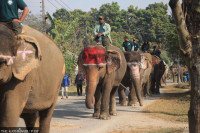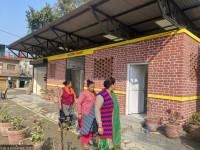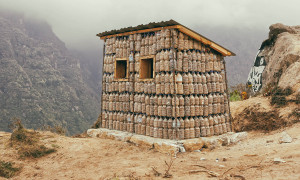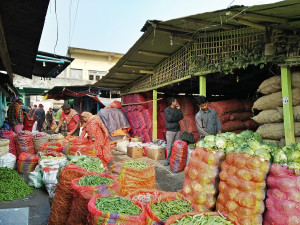Money
Krishnanagar biggest entry point for Indian goats
Nearly 33,000 goats were imported through the Krishnanagar border crossing in the western Tarai during the recently concluded Dashain festival, making it the biggest entry point for these meat animals.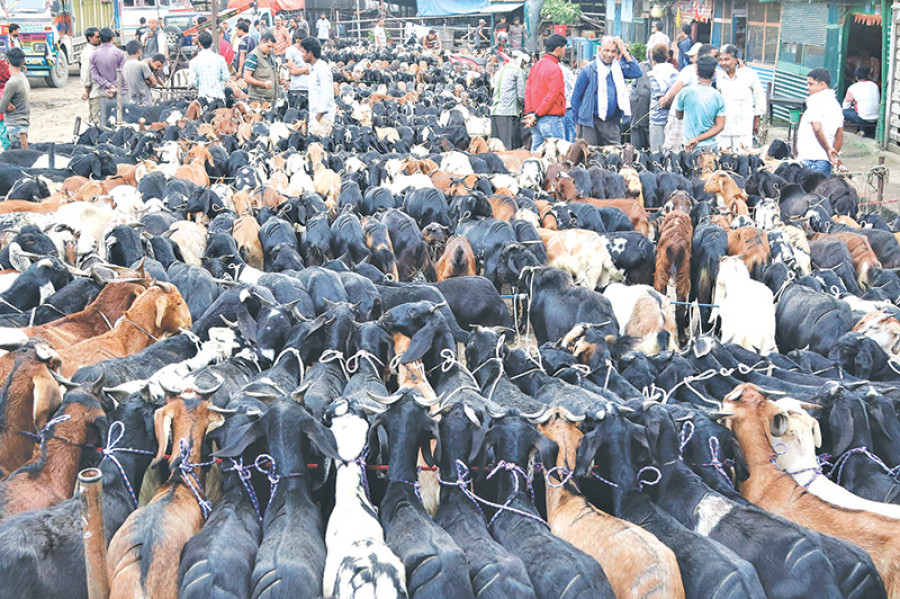
Manoj Poudel
Nearly 33,000 goats were imported through the Krishnanagar border crossing in the western Tarai during the recently concluded Dashain festival, making it the biggest entry point for these meat animals.
According to the animal quarantine office at Krishnanagar, goats worth more than Rs296 million were shipped through the border point between September 17 and October 1. As demand for goats swelled in the Kathmandu Valley during the festival, traders doubled imports.
In the past, traders used to import goats through the Nepalgunj border point. Shipments were rerouted through Krishnanagar this year.
Goat imports this Dashain were up 50 percent, quarantine officials said. “Around 10-15 truckloads of goats were supplied to the Valley daily,” said Akhileshwor Pandey, chief of the quarantine office. A truck can accommodate up to 300 goats.
Goat traders said that more than 8,600 goats had been shipped to the Valley in the month of July. The number jumped to 21,000 in August. Nearly 90 percent of the country’s requirement of goats was imported from India this year. Indian traders normally transport the goats up to Chandrauta in Kapilvastu using Indian trucks, said Sarif Kuraisi, a goat trader. “From there, Nepali traders transport the animals to Kathmandu.”
Goats are imported from Bahraich, Kanpur, Faizabad and Nanpara districts in the Indian state of Uttar Pradesh. Ibrahim Musalman, an Indian goat trader who has been operating his business from Nepal, said demand outstripped supply during Dashain.
Barbari and Jamunapari are the popular goat breeds supplied to Nepal. Musalman said that Indian markets were sold out of goats due to the sharp rise in demand in Nepal. “We usually send our people to remote parts of India to collect goats for export to Nepal,” said Musalman.
According to the Department of Customs, Nepal imported 327,897 live goats in the last fiscal year. The live animal import bill came to Rs1.93 billion.
A Nepali eats 12 kg of meat per year on average, as per the Ministry of Livestock Dev. In the developing countries, average meat consumption per person is about 14 kg per year. Nepal’s per capita meat consumption was 9.8 kg per year in 2008 and 9.7 kg in 2000.
The country’s meat production currently stands at 318,000 tonnes. Buffalo is the most popular meat among Nepalis followed by goat, chicken and pig. According to the ministry, buffalo meat accounts for 58 percent of the total meat production.
Mutton is the second most popular meat product after buff, making up 20 percent of the country’s meat requirement. Chicken production fulfils 13 percent of the country’s meat requirement.




 13.12°C Kathmandu
13.12°C Kathmandu

